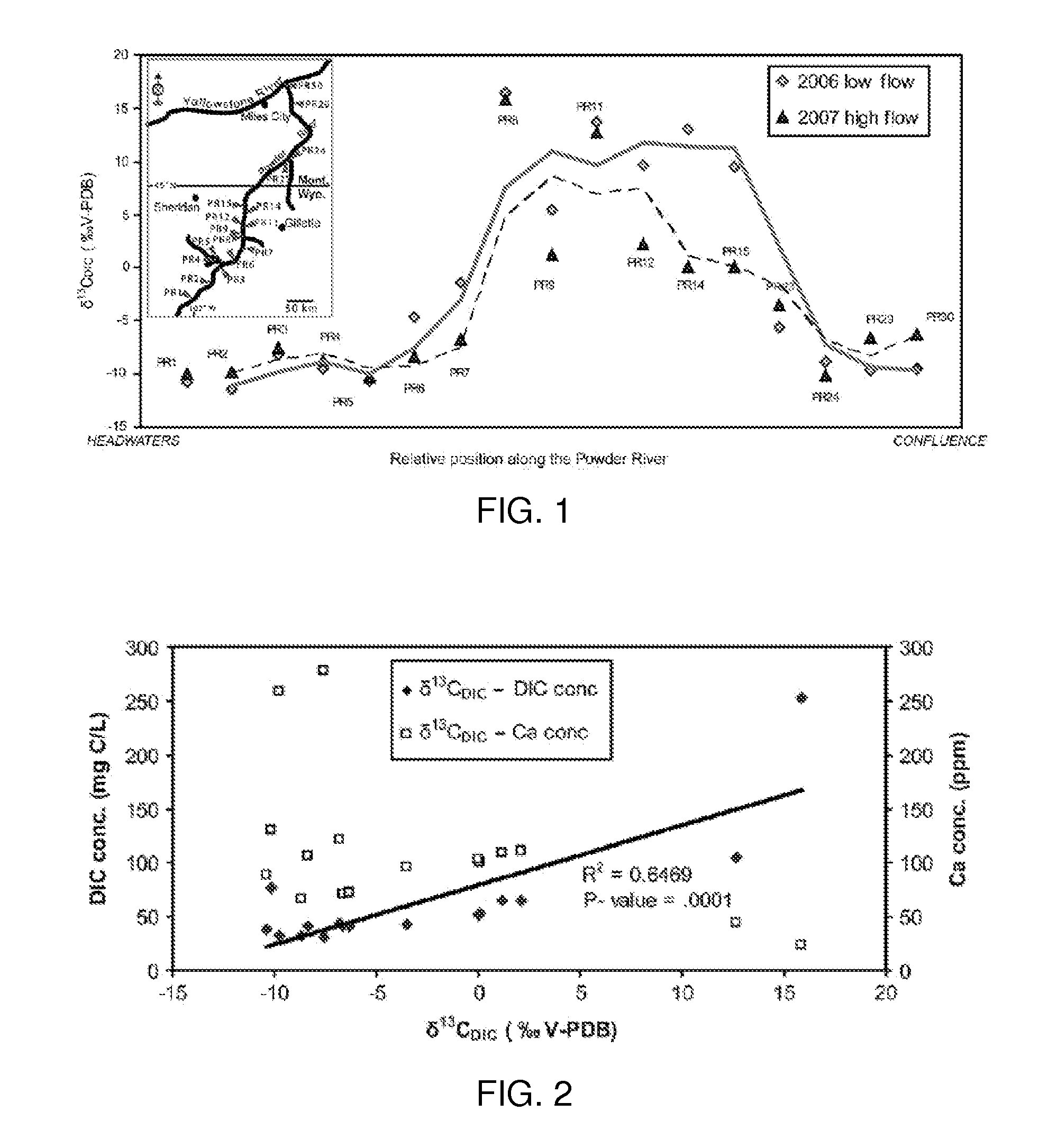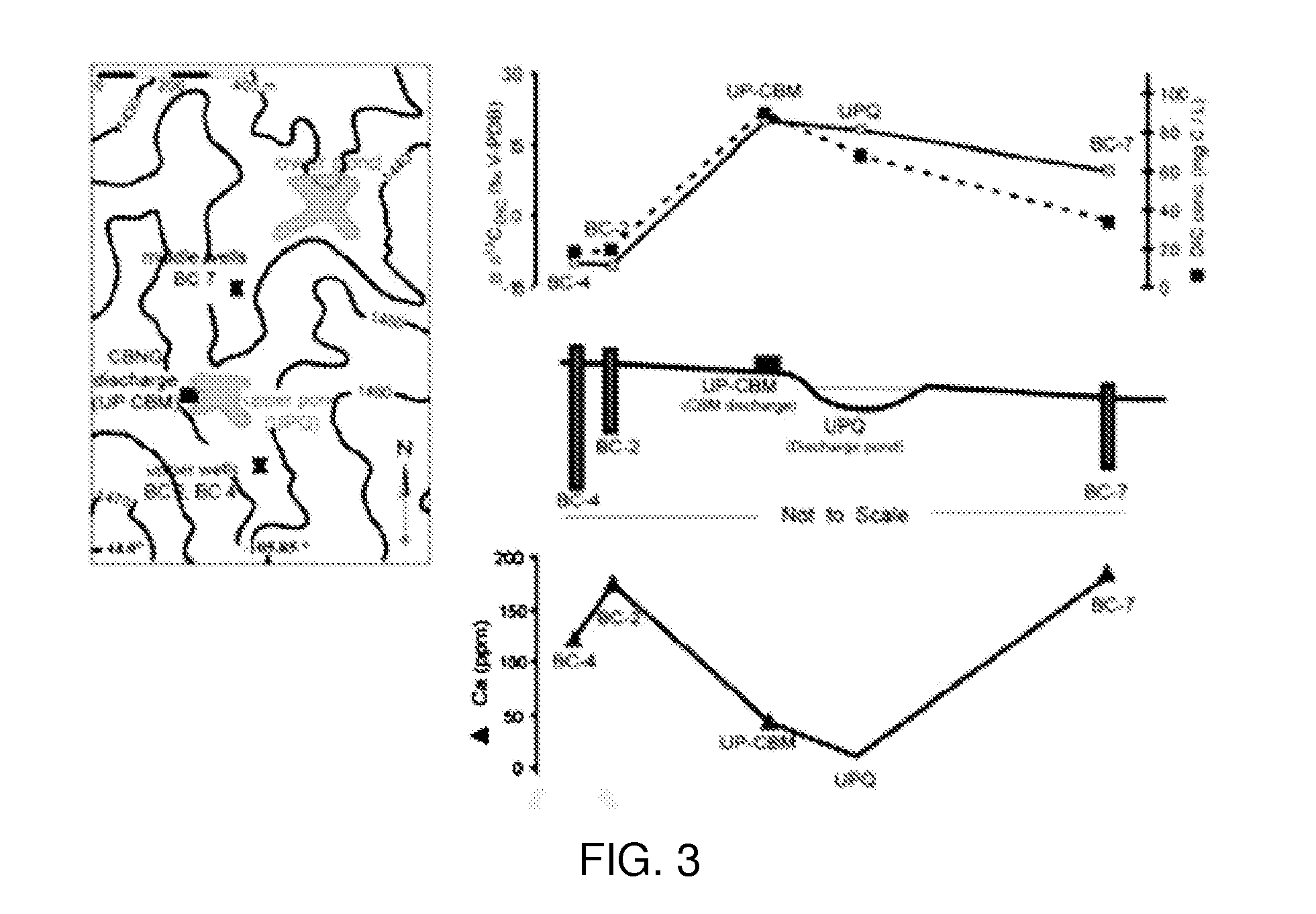Tracing Coalbed Natural Gas - Coproduced Water Using Stable Isotopes of Carbon
a technology of stable isotopes and coalbed natural gas, which is applied in the direction of testing water, instruments, material analysis, etc., can solve the problems of limiting the applicability of this technique, raising environmental concerns, and uneconomical treatment costs
- Summary
- Abstract
- Description
- Claims
- Application Information
AI Technical Summary
Benefits of technology
Problems solved by technology
Method used
Image
Examples
Embodiment Construction
[0008]Measuring δ13C (which is the 13C / 12C ratio expressed as per mil deviation from an international standard) of dissolved inorganic carbon (DIC) in ground water provides a low-cost diagnostic tool to trace water sources and to understand ground water interactions if there are large differences in δ13C values among different carbon reservoirs in a particular region. The δ13C of DIC is controlled by the isotopic composition of the carbon sources. The major sources of carbon contributing to DIC in natural ground water are CO2 derived from root respiration or microbial decay of organic matter and the dissolution of carbonate minerals. CO2 derived from root respiration or microbial decay of organic matter has δ13C centered around −25‰ in temperate climates where C3 plants dominate. After dissolution of this soil CO2, the pH of infiltrating water decreases and is able to dissolve the soil carbonates with δ13C of approximately +1‰:
CO2+H2O+CaCO3=>2HCO3−+Ca2−
[0009]This process results in ...
PUM
| Property | Measurement | Unit |
|---|---|---|
| salinity | aaaaa | aaaaa |
| concentrations | aaaaa | aaaaa |
| concentration | aaaaa | aaaaa |
Abstract
Description
Claims
Application Information
 Login to View More
Login to View More - R&D
- Intellectual Property
- Life Sciences
- Materials
- Tech Scout
- Unparalleled Data Quality
- Higher Quality Content
- 60% Fewer Hallucinations
Browse by: Latest US Patents, China's latest patents, Technical Efficacy Thesaurus, Application Domain, Technology Topic, Popular Technical Reports.
© 2025 PatSnap. All rights reserved.Legal|Privacy policy|Modern Slavery Act Transparency Statement|Sitemap|About US| Contact US: help@patsnap.com


